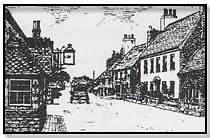Help
Community21 has selected some case study communities and projects to share across the network to inspire and inform others. Should we be featuring yours? If so get in touch.

Parish information: Settlements: Upper Beeding, Small Dole and Edburton Population: 2011 Census – 3,736
Upper Beeding is a pretty village in West Sussex, which lies in the flood plain of the River Adur gap in the South Downs four miles north of Shoreham by Sea and has a land area of 1877 hectares (4637 acres). Upper Beeding is on the northern edge of the South Downs National Park which was created in 2010. The South Downs Way and Monarchs Way (long-distance footpaths) run through the parish; the area is popular with walkers, cyclists and equestrians. Beeding in Bloom, a committee of local villagers, have taken over the entry of the village in local and national flower competitions and their success is apparent from the appearance of the village. Also included in the parish are the hamlets of Edburton and Small Dole.
The relief and underlying geology of Upper Beeding are very varied. Much of the southern part lies on the Chalk of the South Downs, once largely open sheep pasture, which also provided a site for holding a muster of Lewes and Bramber rapes in 1625 and for a gibbet in the 1840s. Since the 18th century most of the downland has been turned over to arable farming, whilst in the 20th century very large excavations have been made at the cement works in the south-west. Windmill Hill, 192 ft. high, which lies east of the village, is separated from the rest of the Chalk by the Henfield road.
The river Adur has always been important, for its effect on the landscape of the parish, as a means of communication, and in providing employment. Sometimes it was called the Beeding river or water, and on one occasion Horton river. In the early Middle Ages it formed a wide estuary between Bramber Castle, King’s Barn, and Wyckham (inSteyning) on the west and Upper Beeding Church and Horton Hall on the east; much sea shingle is said once to have been visible at King’s Barn. In the Middle Ages salt was extracted from tidal marshland within the parish. Later, as in other parishes of the Adur valley, land was gradually reclaimed.
Includes: • The Kings Head (Old beamed pub with great history and garden leading to the Adur) • The Rising Sun (Local family run Pub and B&B with good cask ales, quality food and entertainment) • Downsview (High quality B&B, fantastic breakfasts and retro juke box!) • Beeding Newsagents, Post Office, Village Barbers, Khusbu Indian Take Away and Southdown Pharmacy in the High St. • Nisa Supermarket, Eclipse Hairdressers, Village Spice Take Away, One Stop Computer Shop & Handsome Hounds Dog Grooming in Hythe Square • The Fox Public House & Small Dole Post Office and Shop in Small Dole • St.Peter’s Saxon Church also known as the “Sele Priory Church” Rebuilt in 1307-1308. The church was an early part of Tractarianism, and under the influence of the Oxford Movement it has long stood in the “country catholic” tradition. • Saltings Field, a wildlife conservation area with 13th-15th Century salt making remnants • Village hall, where regular talks from the Beeding and Bramber Local History Society take place • St. Andrews Church (13th Century church in Edburton) • Upper Beeding Baptist Church • Valerie Manor (Nursing & Residential Home) once visited by Winston Churchill • Tottington Woods, a 13 acre community woodland and nature reserve run by local volunteers in Small Dole • Memorial Fields High St. Upper Beeding that includes a Sports Hall, Multi User Games Area (MUGA) and playing fields • A walk back in time to the unused UB Cement Works (as mentioned in recent Peter James novel) • The Tottington Hotel & Restaurant in Edburton • Access to the South Downs Park The village has good access to the coastal towns of Shoreham, Worthing and Brighton.
(Extracts taken from ‘Upper Beeding’, A History of the County of Sussex: Volume 6 Part 3: Bramber Rape)